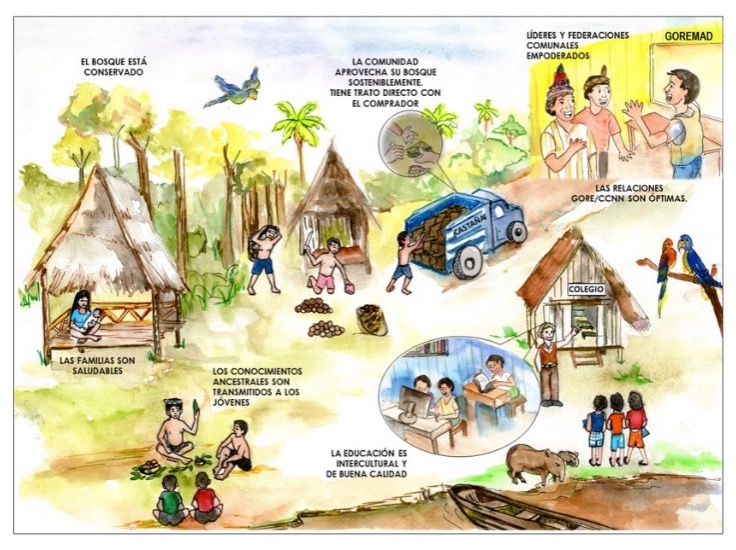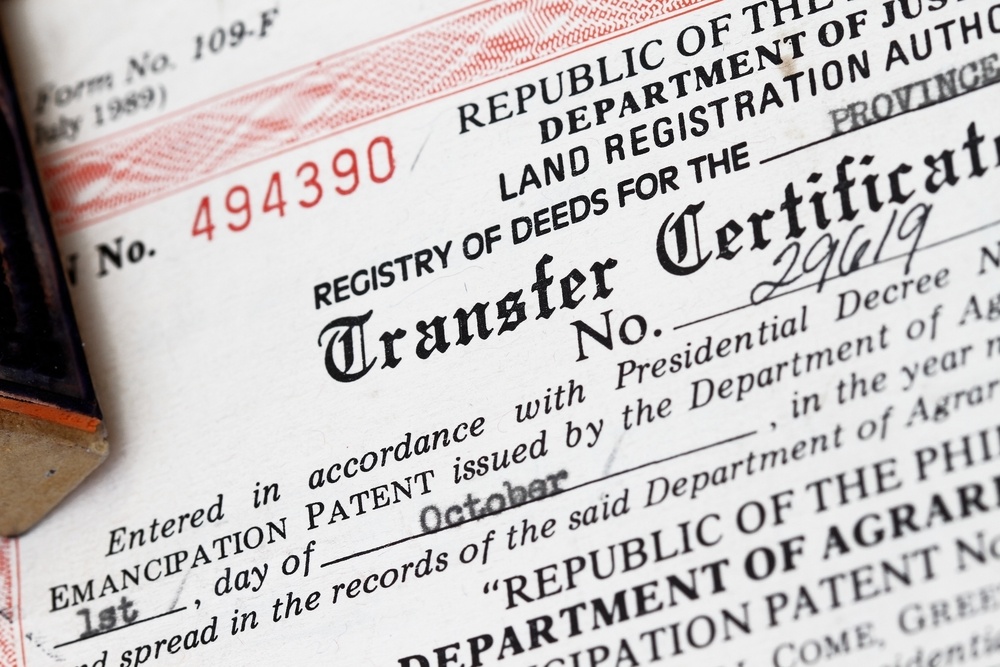Within the LAND-at-scale (LAS) program, tenure security is seen as a central land governance component to bring about structural, just, sustainable and inclusive change: through secure tenure, land right holders will increase their land use, and thus improve their livelihood. This is particularly the case for vulnerable groups. Tenure security also allows for community level land-use planning for more sustainable land use. And it stimulates a working land market. Land registration is implemented in numerous LAND-at-scale projects as one of the tools to bring about tenure security. In this blog we reflect on some critical aspects brought up by the implementing partners during the LAND-at-scale exchange event, and embed them in the wider insights on the relationship between land registration and tenure security that came forward from the LANDac conference.
Land registration driven by legal frameworks – with frictions
LAS interventions are often built on national laws that require land registration. International NGOs implement pilots that adhere to these legal requirements. Burkina Faso, Uganda, Colombia and Rwanda are some of the examples. Whereas the main narrative is that formal systems provide tenure security, it also raises the question: whose needs are met by land titling? In practice, LAS implementers mention two specific challenges with rolling out land registration driven by national legal directives. The first concerns conflicts between statutory and customary systems relating to rights and use practices, for example in Burundi[1], but also to broader governance systems. The second challenge relates to the implementation by the government of its own laws. This was illustrated by the cases of Uganda and Mozambique, where communities are stimulated to register their rights on communal land against external pressure on their land, but at the same time investors are encouraged by government to invest in such communal areas.
Rights for one is exclusion for another
Formalization of land rights needs to take into account the diversity of these rights. Multiple actors have rights to the same piece of land: individual and collective rights, ownership and use rights, temporary rights for pastoralists, and overlapping rights from historical periods. Formalization of rights in many cases in general means that a single actor becomes the single right holder. More informal or secondary right holders, in particular women and internally displaced persons, risk losing their rights as a consequence.[2] To tackle this challenge a registration approach that takes into account the continuum of land rights[3] and a legal framework that supports the diversity of rights are essential. This extends to clarity on situations where former refugees return to their homes where incumbents occupy “their” land as experienced in Rwanda and Burundi.
Security is not a piece of paper
Registration results in documents that record people’s land rights. Handing out these documents is seen as an important milestone on the road to tenure security. And indeed, ownership documentation is crucial in many contexts. But, this does not hold everywhere. In Burundi, less than 40% of certificates were collected by right holders after mapping1. In Colombia, members of indigenous communities remarked that they felt more insecure after their land was being mapped, fearing that their neighbors can now sell their land. Formalization for them only has value at the edges of their collective lands, where they experience encroachment by small-scale farmers. It illustrates that “pre-existing informal tenure arrangements are not necessarily insecure”.
Security as construct
These observations from the ground tie in with the messages by Laura German, key-note speaker at the LANDac conference. She argues that land, tenure and security are known and practiced in a diversity of ways which are radically different from the concept used in the international land governance community.[4] For example, the practice of excluding unmarried women from inheriting land can be seen as a manner to increase security of tenure for the core family. Daughters with land rights who subsequently move to their husband’s land open up avenues to outsiders to claim these rights. She also put side by side the term “rights” as used by the international land governance community and “duties” that underlie local community practices. Indeed, over time the concept of rights has been broadened to Rights, Restrictions and Responsibilities in the field of land administration. Anne Larson (CIFOR) effectively illustrated that tenure security indeed is multi-dimensional, connected and complex in the experience of the community[5].

Strategies by LAND-at-scale
The LAS program has put into place strategies to mitigate the challenges identified by the LAS implementing partners. Adaption to local contexts is enabled through registration in a Fit-for-purpose[6] manner, which continues to evolve. Parallel training of para-legals in the communities and conflict resolutions mechanisms, as well as building capacity of government officials at local and national level aim to contribute to institutional security. And interventions are embedded with local actors, and aligned with in other initiatives. Through embedding a Knowledge Management component from the outset, LAND-at-scale puts in a considerable effort to learn from the lessons in the past, and will document new insights over the coming years. A state-of-the-art study that questions the main assumptions underlying land registration approaches is forthcoming, make sure to follow us on the Land Portal[7] and RVO[8]
[1] Veldman, M. (2020): Pathways to improving and scaling Land Tenure Registration in Burundi. Published by RVO, available via https://landportal.org/library/resources/las20bi1-p201025/land-scale-pathways-improving-and-scaling-land-tenure-registration-ltr
[2] Lengoiboni, M., Richter, C., van Asperen, P. & Zevenbergen, J.A. (2021): Initial insights on land adjudication in a fit-for-purpose land administration. In: Land 10 (4) p1-16
[3] Framework for evaluating Continuum of Land Rights scenarios – Global Land Tool Network (gltn.net)
[5] Drawing by Lesky Zamora Rios, published in Zamora A, Monterroso I. 2017. Una visión regional y local sobre la seguridad de tenencia comunal de la tierra y el bosque en Madre de Dios. Infobrief 228. Bogor, Indonesia: CIFOR.
[6] See this LAS knowledge depository with material on the Fit-for-purpose approach https://docs.google.com/document/d/1QoFrzroX2MlNvDGaBE9aBBHHYvkEuR9eMASHFrzMYCQ/edit?usp=sharing


